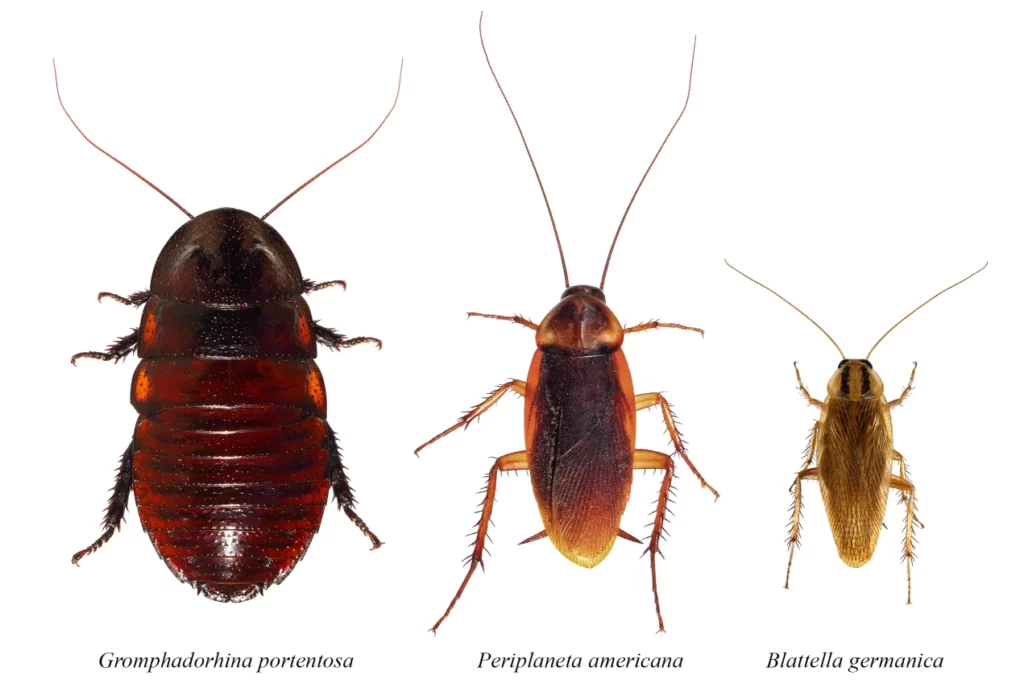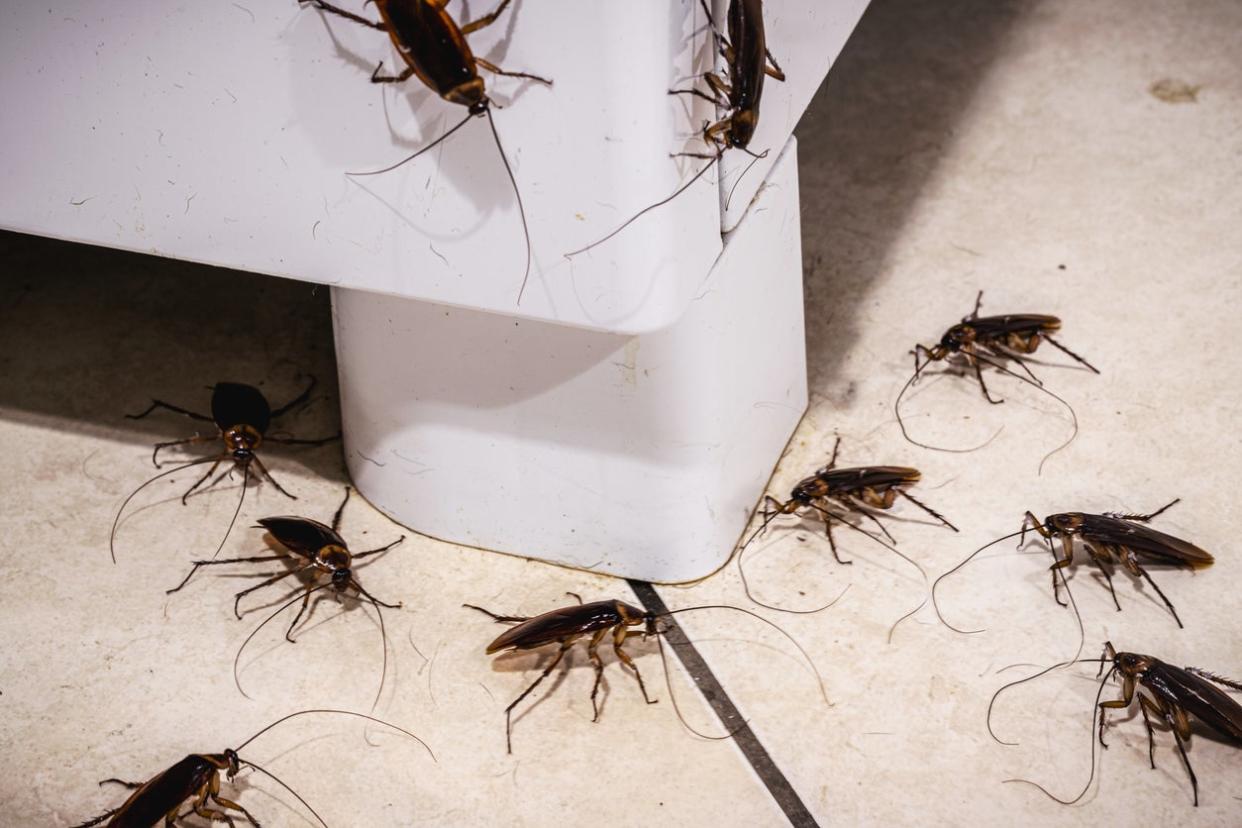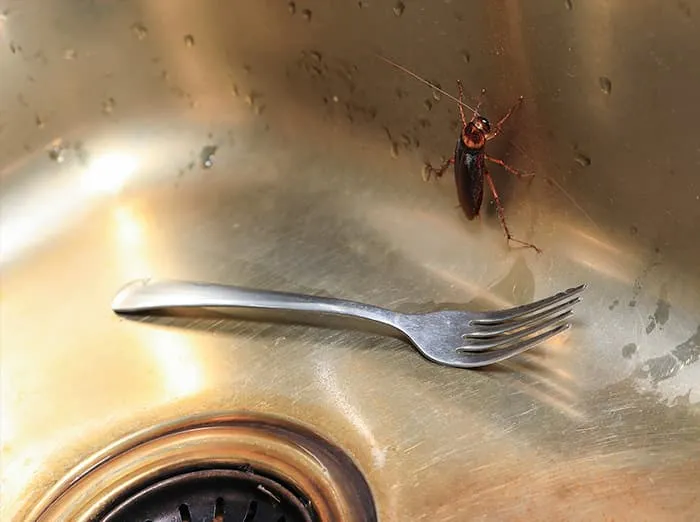Cockroach Treatments in Florida:
Exterminator Services for Bradenton, Parrish, and Palmetto
Florida’s subtropical setting, with its mild winters and abundant moisture, provides the perfect conditions for cockroaches to proliferate year-round. From bustling coastal towns like Bradenton to the suburban enclaves of Parrish and the waterfront community of Palmetto, residents and business owners face the reality that roaches can infiltrate kitchens, bathrooms, and other indoor spaces if given the opportunity. Whether you see large, flying palmetto bugs darting across your living room or discover smaller roaches in cupboards at night, prompt cockroach treatments become essential to preserving a clean, healthy environment. This service page clarifies why roaches thrive in Florida, the signs indicating an infestation, and how partnering with a professional exterminator effectively eradicates these pests while guarding against future invasions.
Why Cockroaches Flourish in Florida

- Mild, Year-Round Temperatures
In colder climates, extended freezing weather stifles roach breeding and activity. Florida’s mild winters, however, rarely reach the temperature extremes that hamper roaches. As a result, various cockroach species can reproduce with minimal seasonal slowdown, staying active all year and turning small intrusions into significant infestations if left unchecked. - Abundant Humidity and Rainfall
Cockroaches crave moisture, locating water in leaky pipes, condensation around air conditioners, or the damp corners of basements and bathrooms. When heavy rains or high humidity keep outside conditions wet, roaches often migrate indoors to seek refuge, especially in older structures with ample cracks or unsealed openings. - Steady Food Supply
Milder winters help sustain continuous insect populations, providing roaches with multiple prey options. More importantly, roaches feed on almost any organic matter—spilled crumbs, pet food, or poorly sealed pantry goods. Dense communities, especially in urban or suburban zones, guarantee roaches can find scraps to sustain themselves and breed. - Minimal Seasonal Dormancy
Roaches in colder regions might slow or enter dormancy through prolonged cold months, limiting reproduction. Florida’s subtropical climate spares roaches from these temperature lows, giving them near-uninterrupted breeding and feeding cycles. Failing to address even a few roaches might spawn a widespread colony rapidly under these conditions. - Ongoing Development and Tourism
The region around Bradenton, Parrish, and Palmetto sees consistent construction and renovation. When soil or materials shift, roaches may relocate from disrupted outdoor nests into new or existing buildings if cracks in foundations or walls remain unsealed. Meanwhile, a steady flow of visitors or deliveries also inadvertently can carry roaches between properties.
Signs of a Cockroach Infestation
- Droppings
Cockroach droppings differ by species. Smaller roaches, like German cockroaches, leave pepper-like specks, whereas larger roaches (American or smoky brown) produce cylindrical, ridged droppings. Fresh feces usually appear dark and moist, typically accumulating near feeding or nesting spots—like behind appliances, under sinks, or around cabinets. - Egg Casings (Oothecae)
Cockroaches deposit egg capsules containing multiple eggs. These might be hidden in cupboards, stuck to walls behind large appliances, or placed in narrow crevices. Discovering brownish, capsule-shaped ootheca suggests active roach breeding on the premises. - Distinctive Odors
Significant cockroach populations or certain species may produce a musty or oily smell. While not always detected with minor infestations, a lingering or unusual odor in closed spaces, such as pantries or behind refrigerators, can hint at roach presence. - Daytime Sightings
Roaches typically forage at night, so encountering roaches during daylight hours often suggests a larger or advanced infestation that forces more roaches out of hiding. Spotting them scuttle across floors or walls indicates an urgent need for cockroach treatments. - Smear Marks
In areas where roaches gather and moisture is high, roaches may leave irregular dark smears on walls or surfaces. Observing such trails along baseboards or near damp corners underscores elevated roach traffic.
Why Prompt Cockroach Treatments Are Crucial
- Health and Sanitation
Roaches can transport bacteria or parasites from unsanitary spots (like drains or trash) onto countertops, dishes, or stored foods, raising contamination risks. Their droppings or shed skins further degrade indoor air quality, aggravating allergies or asthma in some residents. - Rapid Reproduction
One female cockroach can produce multiple oothecae in her lifetime. With each capsule potentially holding many eggs, a neglected problem can explode into a roach swarm in just a few weeks—especially in Florida’s warm weather. - Damage to Reputation
Restaurants, hotels, or rental properties rely on cleanliness. A roach sighting can spark bad reviews, negative word-of-mouth, or health code scrutiny. Timely extermination helps preserve public trust and occupant comfort. - Mental and Emotional Stress
Sharing living or working areas with roaches can unsettle daily life. People may fear encountering roaches unexpectedly, worry about contamination, or find it difficult to relax at home. Proactive elimination restores a sense of normalcy.

Effective Exterminator Strategies
- Thorough Property Inspection
An expert cockroach exterminator first examines the property to locate roach nesting zones, droppings, or egg casings. Inspecting kitchen corners, bathroom cabinets, utility areas, and even yard elements helps pinpoint the species present (like German, American, or others) and the extent of infestation. - Sanitation and Food Management
Roaches feed on organic scraps, so owners should seal food containers, clean up spills immediately, store pet food in enclosed bins, and empty trash regularly. Removing easy meals forces roaches out of hidden areas, making them more vulnerable to traps or baits. - Sealing Entry Points
Roaches slip through cracks in walls, under doors, or via plumbing lines. An exterminator may recommend sealing these gaps, adding weatherstripping, or employing door sweeps to deny roaches repeated access once existing populations are cut off. - Baits and Gels
Common chemical methods include placing bait stations or applying gel baits in corners, under sinks, or behind appliances. Roaches that consume these baits carry the toxin back to the nest, spreading it among colony members. This approach works especially well against German cockroaches in kitchens or bathrooms. - Residual Sprays
Applying insecticides along baseboards, cracks, or roach-travel paths leaves a lasting barrier that kills or repels roaches crossing these zones. By carefully targeting high-activity areas, professionals minimize pesticide use while maintaining effectiveness. - Dust Applications
In small crevices or wall voids, insecticidal dusts can remain potent for extended periods, affecting roaches that traverse hidden tunnels or harborages. The dust clings to their bodies, eventually proving lethal once ingested during grooming. - Follow-Up and Monitoring
Because egg capsules may hatch after initial treatment, scheduling re-checks ensures newly emerged nymphs do not re-colonize. If roach sightings persist, an exterminator can adjust baits, reapply chemicals, or explore alternative measures until roaches are fully eradicated.
Serving Bradenton, Parrish, and Palmetto
Bradenton: Located along the Manatee River, Bradenton offers a mix of historic neighborhoods and growing suburban developments. Roaches can thrive in older homes with hidden cracks, or around waterfront properties where humidity stays high. Quick detection and consistent property oversight help owners stay ahead of roach issues.
Parrish: A community experiencing rapid residential expansion, Parrish sees new housing but also farmland or older structures that might harbor roaches. Busy lifestyles with frequent entertaining or open doors can inadvertently welcome roaches searching for easy meals.
Palmetto: Positioned on the opposite shore of the river, Palmetto balances an old-Florida charm with modern living. Cozy bungalows and lush landscaping sometimes provide roach-friendly conditions, especially if yard debris or outdoor dining scraps remain unaddressed.

Why Opt for Our Cockroach Treatments
- Florida-Focused Expertise
Warm temperatures and frequent rain define southwestern Florida, shaping roach activity. Our solutions cater to these environmental factors, factoring in ongoing breeding cycles and year-round humidity to maximize success. - Precision Tactics
We direct baits, sprays, or dusts where roaches hide, limiting chemical use in random areas. This targeted strategy yields higher roach mortality and minimal disruption to daily life. Post-treatment instructions let owners maintain cleanliness, preventing re-infestations. - Emphasis on Prevention
Beyond eliminating roaches now, property owners learn small steps that hamper future roach intrusions—like sealing cracks, discarding clutter, or using sealed containers for foods. By combining immediate removal with ongoing vigilance, roach presence diminishes permanently. - Monitoring and Follow-Up
With roach eggs capable of hatching weeks after initial control, scheduling re-checks confirms thorough elimination. If a few roaches reappear, swift adjustments ensure they do not re-establish the colony.
Next Steps
Discovering roach droppings in drawers, spotting them skitter across floors, or smelling a musty odor near the kitchen? Contact us to learn more or schedule your service. Our cockroach treatments in Bradenton, Parrish, and Palmetto tackle each species with proven tactics, ensuring a swift return to a roach-free environment. A skilled exterminator inspects your property’s layout, identifies high-risk zones, and applies the best combination of baits, traps, and chemicals for lasting success.
Prompt action saves you from the stress and potential health impacts roaches bring. Roach populations surge quickly in Florida’s mild climate, so addressing them early prevents further expansion. Safeguard your home or business from contamination, property damage, and occupant unease by engaging professionals who understand local roach behavior.
Sustaining a Roach-Free Environment
Once an infestation is eradicated, consistent measures curb re-infestation. Some basic practices include:
- Effective Food Storage: Keeping cereals, grains, or leftovers in sealed containers cuts roach feeding opportunities. Rinsing recyclables and using well-fitted trash can lids further denies roaches easy scraps.
- Diligent Sanitation: Wiping counters immediately after meals, mopping floors, and vacuuming crevices hamper roach foraging. Regularly disposing of trash, especially kitchen waste, prevents buildup of odor or residue that lures roaches inside.
- Fixing Leaks and Reducing Moisture: Eliminating standing water or damp areas—like leaky pipes or AC condensation—removes a key roach survival factor. Moist basements or HVAC lines can be prime roach havens if neglected.
- Sealing Entry Points: Updating window screens, door sweeps, and plugging wall cracks denies roaches new routes in. Roaches wander in at night if even a small gap beneath a door remains unaddressed.
- Regular Inspections: Every few months, glance behind appliances or in less-used rooms for droppings or egg casings. Early discovery stops roaches from returning in force.
Paired with professional guidance, these routines ensure Florida residents around Bradenton, Parrish, and Palmetto live or work with fewer roach worries. Encouraging occupant awareness and swift action against new sightings fosters a more pleasant, hygienic environment year-round.
